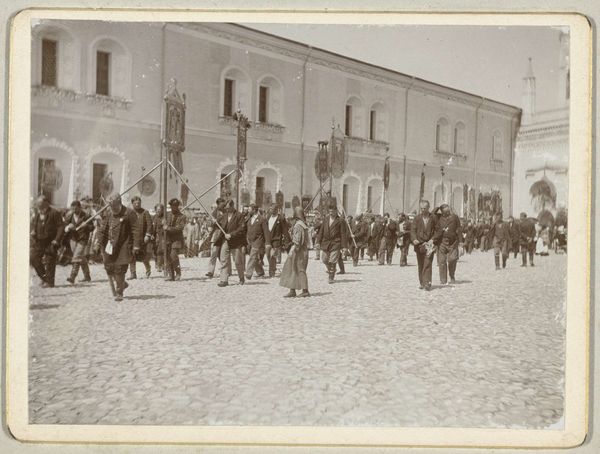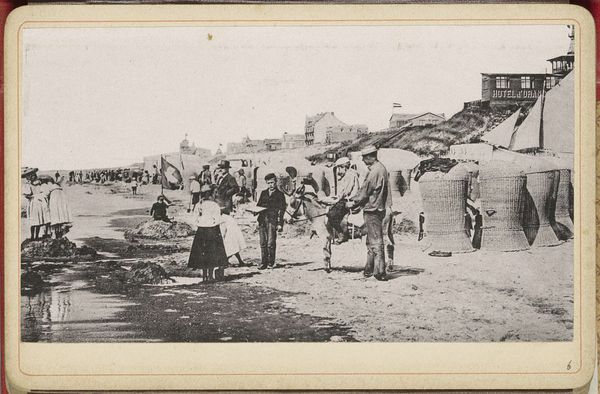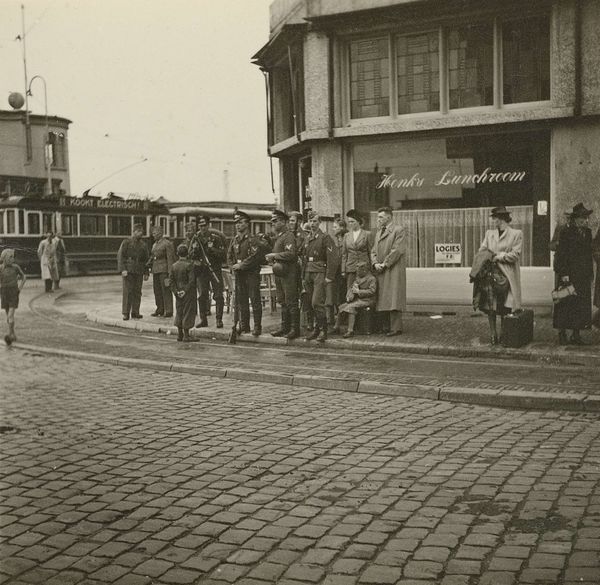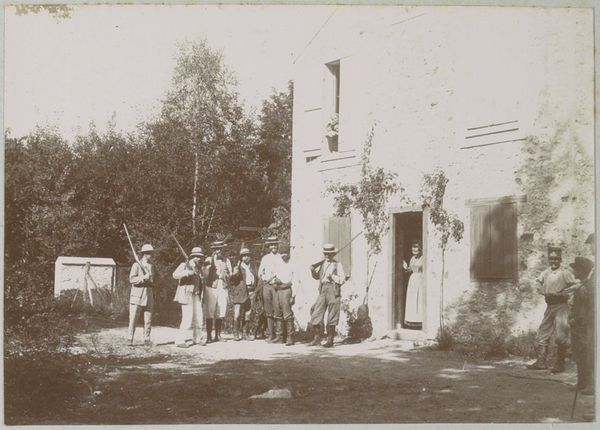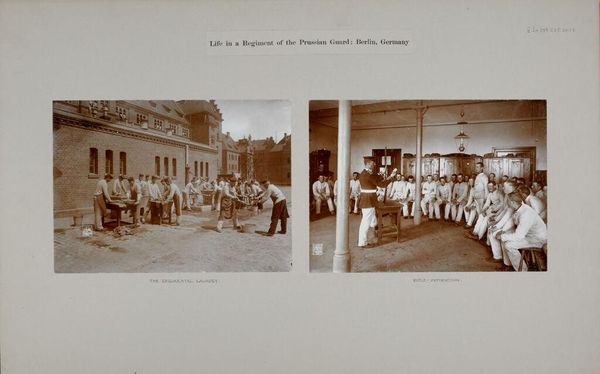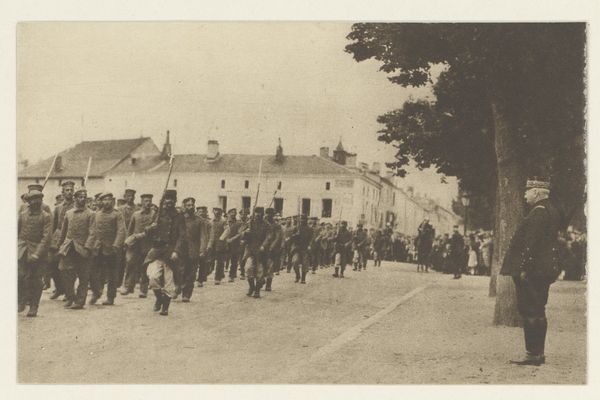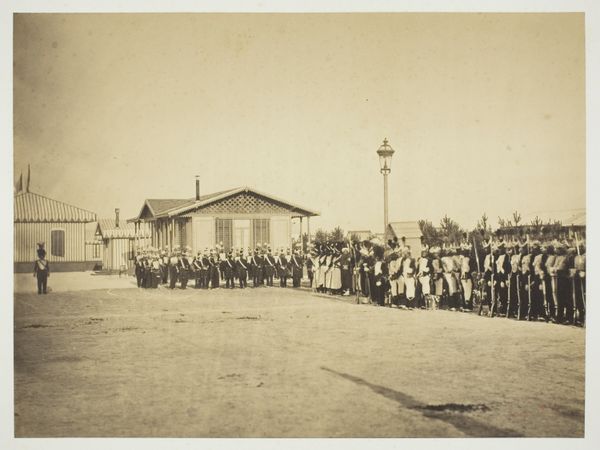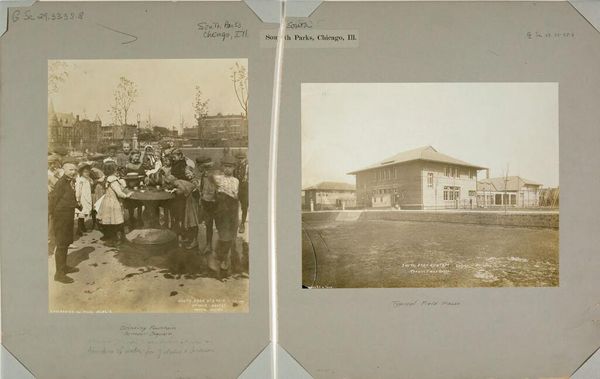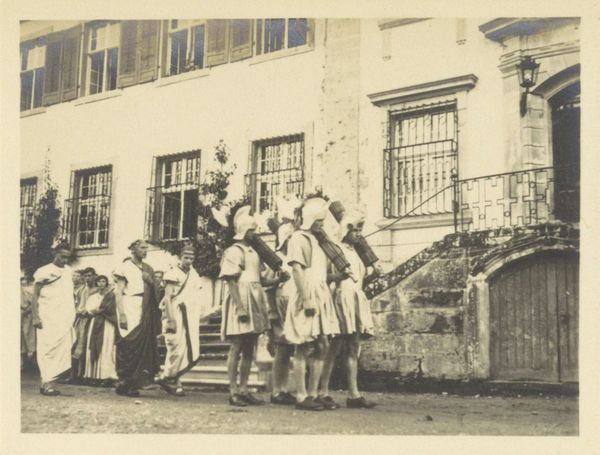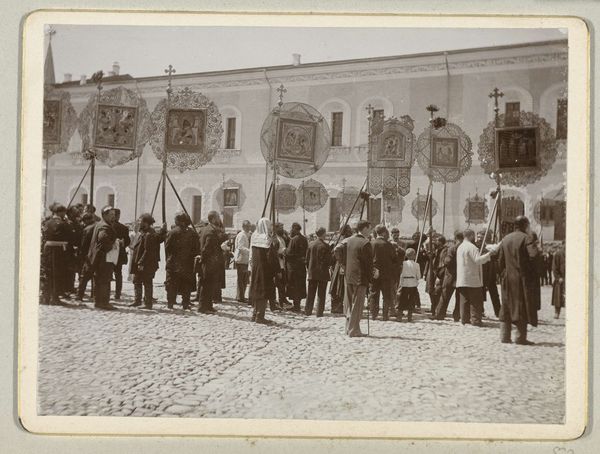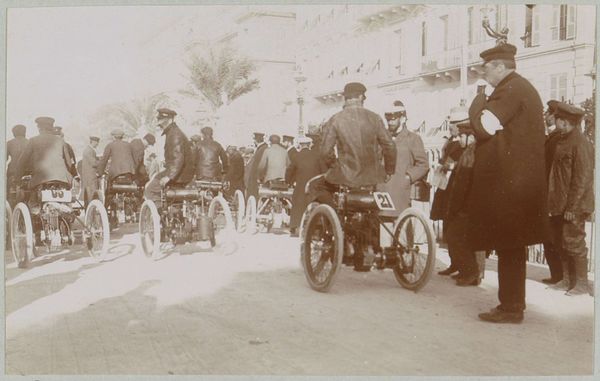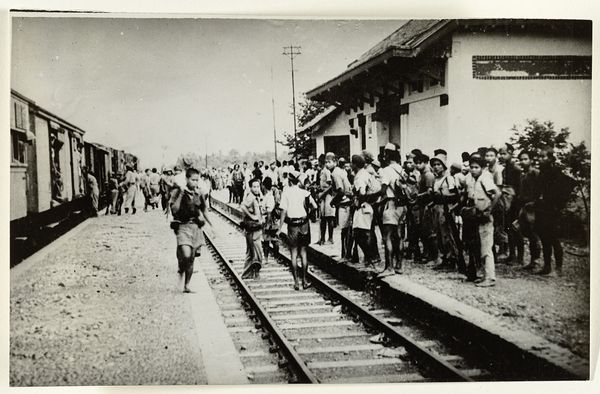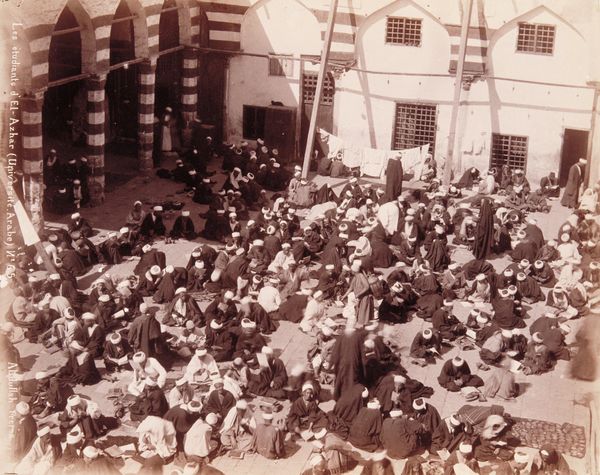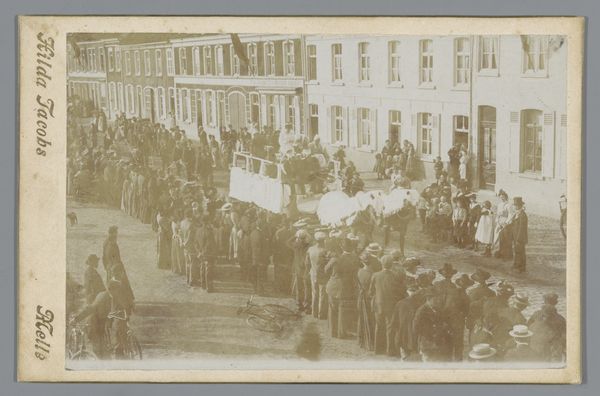
Dimensions: height 220 mm, width 280 mm
Copyright: Rijks Museum: Open Domain
Editor: This is a photograph from 1916, "Members of an international mission at the front in the Dolomites," a gelatin-silver print by Henri de Rothschild. It depicts a group of uniformed men in front of a building. I'm struck by the uniformity of their dress despite the supposed internationality and the…muddy quality of the ground they're standing on. What catches your eye in this image? Curator: I see a fascinating document of production. Consider the gelatin-silver print – a relatively modern process at the time. It allowed for mass production and dissemination of images. Rothschild, embedding himself in this mission, documents not just the officers but the logistical network of image-making. The mud you note is integral – it's the very substance these men are fighting over, the material foundation of the conflict and subsequently, this image's production as propaganda. The uniformity isn’t a negation of their different nationalities, but rather an acknowledgement of them working together to reach similar means. Editor: So you’re saying the process of making the image is almost as important as what the image shows? Curator: Exactly. What kind of labour was necessary to record such events, reproduce these photographs and, considering Rothschild’s wealth, to disseminate these images so widely during a war largely fueled by industrial production? Editor: That's an interesting point. It highlights the connection between art, manufacturing and its use for cultural documentation as well as war. I’d never thought of photography in quite that light. Curator: Consider the global network required for materials, distribution, and consumption of such images; photography is itself a material component to modern conflict. Editor: Looking at it that way gives a whole new appreciation for the role that even something like a photograph can play in such a large conflict. Curator: Precisely. By understanding the mechanics of its making, we can appreciate this piece less as simply an historical record, but as an intricate cog in the war effort itself.
Comments
No comments
Be the first to comment and join the conversation on the ultimate creative platform.
